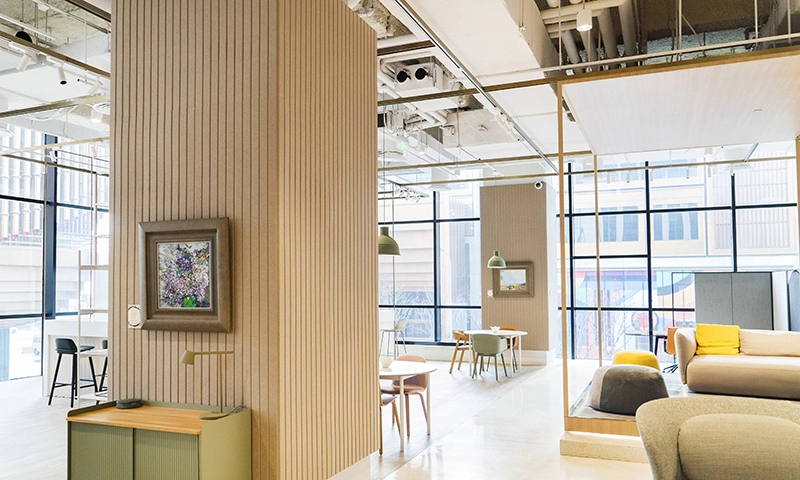Choosing the Right Eco‑Friendly Acoustic Panels for Your Room
In today’s world, where sustainability and well-being matter more than ever, the way we design our interior spaces is evolving. Acoustic comfort—how sound behaves in a room—plays a critical role, especially in environments like home offices, media rooms, classrooms, and studios. Simultaneously, there is a growing awareness of the environmental footprint of our furnishings and materials. As a result, eco‑friendly acoustic panels have become a popular choice for those who want to manage sound while minimizing ecological impact. But how do you choose the right ones for your room? This article explores the key factors, types, benefits, and practical tips to help you make a well-informed decision.
Why Choose Eco‑Friendly Acoustic Panels?
Before diving into specifics, it’s important to understand why eco‑friendly acoustic panels are worth considering:
Health Benefits
Many conventional acoustic panels use foams or synthetic materials that may release volatile organic compounds (VOCs). Eco‑friendly panels are often made from natural or recycled materials, such as recycled PET (polyethylene terephthalate), sheep’s wool, wood fiber, or cork. These materials reduce the risk of poor indoor air quality and contribute to a healthier living space.Environmental Impact
By using recycled or renewable materials, eco‑friendly panels reduce waste and lower the carbon footprint. Choosing such panels supports responsible manufacturing and helps divert waste from landfills.Aesthetic Appeal
Natural materials like cork or wood fiber bring a warm, organic look to a room. Recycled PET panels can come in a range of colors. Because these panels are visually appealing, they can double as design elements rather than purely functional objects.Performance
Modern eco‑friendly panels don’t compromise on performance. Many are highly efficient at absorbing a broad spectrum of frequencies, making them suitable for various acoustic needs—from speech clarity to dampening low-frequency rumble.
Key Factors to Consider When Choosing Acoustic Panels
To select the right eco‑friendly acoustic panels, consider the following factors carefully:
1. Room Purpose and Acoustic Goals
Home Office / Conference Room: Prioritize speech clarity. Panels that absorb mid-high frequencies (500 Hz to 4,000 Hz) are effective.
Media Room / Home Theater: Consider both absorption and diffusion. You may want to combine absorption panels on walls with diffusion panels on the rear wall to balance sound.
Recording Studio / Music Room: Low-frequency control becomes more critical. Bass traps or thicker panels that handle frequencies below 200 Hz may be needed.
Classroom / Lecture Hall: Focus on mid-frequency absorption to minimize reverberation and improve speech intelligibility.

2. Material Composition
Eco‑friendly panels come in a variety of materials, each with its benefits:
Recycled PET Felt: Made from recycled plastic bottles, these panels are lightweight, non-toxic, and available in many colors. They absorb mid-to-high frequencies well.
Wood Fiber: Panels made from wood fiber offer good low-frequency absorption and a natural, textured appearance.
Sheep’s Wool: Naturally breathable and fire-resistant, wool panels provide excellent acoustic performance with a sustainable source.
Cork: Cork combines sound absorption with diffusion, especially in mid frequencies, and has a distinct visual character.
Hemp / Plant-Based Fibers: These emerging materials promise low environmental impact and good acoustic performance, though they may not yet be widely available.
3. Density and Thickness
Thicker panels usually absorb lower frequencies better. For example, a 50 mm panel will trap more bass than a 12 mm one.
Density matters, too — higher density improves performance, especially at the lower end of the frequency spectrum. When you're designing for a specific problem (like bass resonance in a home theater), thickness and density should guide your choice.
4. Fire Safety / Certification
Look for safety ratings like ASTM E84 (Flame Spread and Smoke Developed) or EN 13501 (European fire classification).
Some eco materials, such as wool, are naturally fire-resistant. Recycled PET can also be treated to meet fire-safety standards.
5. Sustainability Certifications
LEED (Leadership in Energy and Environmental Design): Check if panels contribute to LEED credits.
Cradle to Cradle Certification: Indicates that the product is designed for circularity and reusability.
FSC (Forest Stewardship Council): Relevant for wood-based acoustic products, ensuring the wood is sourced responsibly.
6. Installation and Mounting Options
Some panels are self-adhesive, making them easy to install on drywall.
Others come with brackets or Z-clips for more secure, removable installation.
Consider modular panels for flexibility — you can reposition or reconfigure them if you change room layout.
7. Design Flexibility and Aesthetics
Color options: Recycled PET panels often offer a palette of colors, enabling design creativity.
Shapes: There are flat panels, hexagonal tiles, geometrically cut pieces, and even 3D sculptural designs.
Customizability: Some manufacturers allow custom shapes, logos, or prints.
8. Budget
Eco‑friendly materials can sometimes cost more upfront than conventional foam panels.
However, lifecycle cost savings (through durability, lower maintenance, and better indoor air quality) might justify the investment.
Compare per-square-foot cost, but also weigh long-term benefits.
Popular Types of Eco-Friendly Acoustic Panels and Use Cases
Here are some common eco‑friendly acoustic panel types and where they fit best:
Recycled PET Felt Panels
Use Case: Offices, classrooms, collaborative spaces.
Advantages: Wide color range, light weight, easy installation, non-toxic.
Performance: Excellent at absorbing mid and high frequencies.
Wood Fiber Panels
Use Case: Music studios, theaters, living spaces with natural design.
Advantages: Dense, good for bass absorption, natural look, recyclable.
Performance: Good across a broad frequency spectrum.
Sheep’s Wool Panels
Use Case: Bedrooms, lounges, residential rooms needing aesthetic warmth.
Advantages: Naturally fire-resistant, breathable, biodegradable.
Performance: Very good absorption, particularly in mid frequencies.
Cork Acoustic Tiles
Use Case: Eco‑design spaces, conference rooms, creative studios.
Advantages: Visually appealing, sustainable harvesting, provides both absorption and diffusion.
Performance: Good mid-frequency control, moderate diffusion.
Plant-Fiber (Hemp / Flax / Kenaf) Panels
Use Case: Eco‑homes, green buildings, sustainable design projects.
Advantages: Renewable materials, low embodied energy, potentially compostable.
Performance: Still under development in many cases; check with specific manufacturers.
Steps to Choosing the Right Panels
Here’s a practical step‑by‑step guide to help you choose and implement eco‑friendly acoustic panels:
Assess Your Room’s Acoustic Needs
Measure the room’s dimensions (length, width, height).
Identify predominant sound issues: Is it too “echoey”? Is there a low-frequency boom? Is speech unclear?
Use a room mode calculator (there are many free tools online) to predict problematic frequencies.
Decide on the Target Frequency Range
For speech clarity: focus on mid‑high frequencies (500 Hz–4,000 Hz).
For music or media rooms: add low-frequency treatment (below 250 Hz).
Choose the Material
Based on your sustainability goals, budget, and design vision, pick a material type from the list above.
Check manufacturers’ acoustic performance data. Look for NRC (Noise Reduction Coefficient) ratings or absorption coefficient curves.
Design Your Layout
Consider a reflection map: mark where speakers or sound sources are and where reflections hit.
Decide where to place panels: on walls, ceiling, corners (for bass traps), behind monitors, etc.
Combine absorption (flat panels) and diffusion (geometric or 3D panels) if needed.
Verify Safety and Certification
Ask for fire-safety certifications.
Confirm sustainability credentials (e.g., recycled content, certifications like Cradle to Cradle or FSC).
Install Properly
Clean and prep surfaces.
Use the right mounting system: adhesive, clips, or brackets.
Leave a small air gap (if recommended) behind panels — this often improves low-frequency absorption.
Evaluate and Adjust
After installation, test your room acoustics. Record or use a measurement app/software.
If issues remain (e.g., bass is still boomy), consider adding bass traps or increasing panel thickness.
Rearrange panels if needed — sometimes small changes make big differences.
Advantages and Trade‑offs of Eco‑Friendly Acoustic Panels
It’s helpful to consider both the upsides and potential trade‑offs of eco‑friendly acoustic panels:
Advantages:
Sustainable materials: Reduced environmental impact and waste.
Better air quality: Low VOC emissions improve indoor health.
Aesthetic versatility: Materials and colors give design flexibility.
Durability: Many eco‑materials are robust and long-lasting.
Regulatory alignment: Helps with green building certifications (LEED, WELL, etc.).
Trade-Offs:
Cost: Eco materials can be more expensive per square foot than basic foam.
Weight: Some materials (wood fiber, dense wool) may be heavier and require more robust mounting.
Availability: Certain eco materials (like specific plant fibers) may not be widely available in all regions.
Performance limits: Very thin or lightweight eco panels may not perform as well in very low frequencies without additional treatment.
Real-World Examples and Case Studies
To illustrate how eco‑friendly acoustic panels are used in practice, here are a few hypothetical or real-world scenarios:
Home Office in Urban Apartment
Jane, a remote worker, lives in an apartment in a busy city. She finds constant noise from street traffic distracting. She installs recycled PET felt panels on two opposite walls near her workstation. The panels are 40 mm thick and come in a calming gray-blue color. After installation, her calls are clearer, and the room feels more peaceful without introducing synthetic chemical odors.Green Design Conference Room
A small architectural firm prides itself on sustainable design. For its conference room, it selects cork acoustic tiles in a hexagonal shape. The cork is harvested sustainably, and the design choice aligns with the firm’s eco ethos. The tiles help reduce echo, improve speech intelligibility during meetings, and add a warm, organic look.Music Studio in a Sustainable Home
A composer building a home studio in a net-zero house integrates wood-fiber bass traps in the corners and sheep’s wool panels on the walls. The combination controls low-frequency resonance while preserving a natural, breathable interior. Because wool is naturally fire-resistant, the studio avoids synthetic flame retardants.
Maintenance Tips for Eco‑Friendly Acoustic Panels
To ensure your panels last and continue performing well:
Avoid Moisture: While many materials are naturally resilient, excessive humidity can damage certain natural fiber products. Maintain moderate humidity levels in the room.
Dust Gently: Use a soft-bristle brush or vacuum with a soft brush attachment to remove dust periodically.
Avoid Harsh Cleaners: Do not use strong chemical cleaners. A slightly damp cloth can be used for PET felt or wood fiber surfaces.
Inspect Mounts: Periodically check mounting clips or adhesive to ensure panels remain securely attached.
Reconfigure if Needed: If you change your room layout or usage, don’t hesitate to rearrange panels for better performance.
Future Trends in Eco‑Friendly Acoustic Panels
Looking ahead, the field of sustainable acoustic treatment is poised for more innovation:
Biodegradable Panels: Research into panels made from agricultural waste (like straw or fungal mycelium) is advancing. These materials could decompose naturally at end of life.
Circular Design: Manufacturers are increasingly designing panels for reuse or recycling — enabling “closed-loop” acoustic products.
Smart Acoustic Panels: Integrated sensors or IoT-enabled panels could adaptively change their absorption or diffusion properties.
Hybrid Materials: Combining bio-based fibers with recycled synthetics may further improve performance, fire resistance, and cost-efficiency.
Conclusion
Choosing the right eco‑friendly acoustic panels for your room involves more than just picking a pretty-looking tile. It requires thoughtful consideration of your acoustic needs, material sustainability, safety, and design preferences. By evaluating the purpose of your space, the frequency challenges you face, and the trade‑offs of different materials, you can select panels that not only improve your sound environment but also align with your values of ecological responsibility.
From recycled PET felt to wood fiber, wool, cork, or plant-based materials, eco‑friendly acoustic panels provide a powerful way to enhance interior comfort while reducing environmental impact. With proper planning, installation, and maintenance, they can transform your space into a healthier, quieter, and more sustainable haven — a room that works for you and the planet.
 en
en en
en





